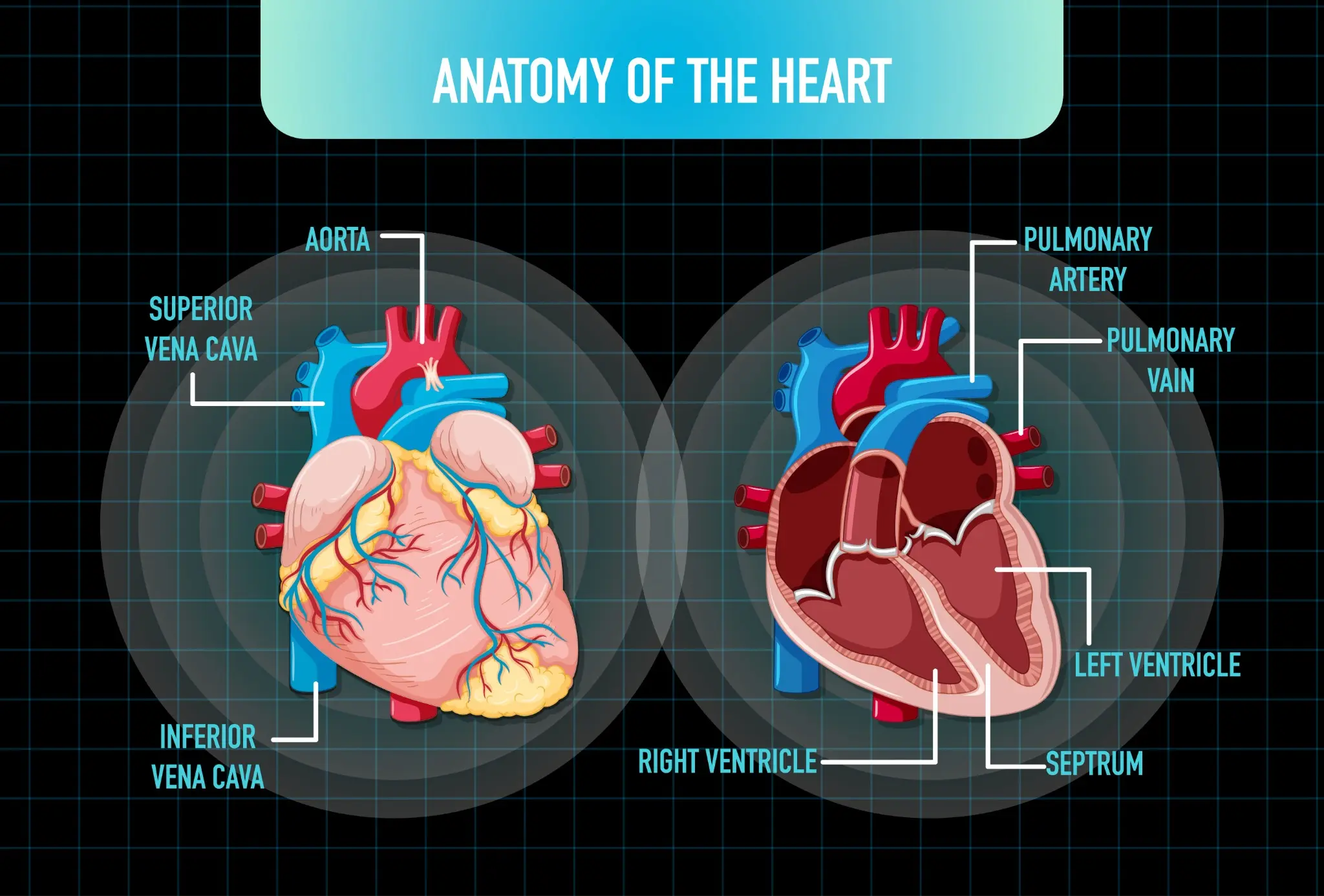Aldosterone-to-Renin Ratio
Also known as: Aldosterone/PRA Ratio, Serum & EDTA Plasma
Aldosterone Renin Ratio Overview
The aldosterone renin ratio test or ARR test is a blood test that measures the balance between two essential hormones: aldosterone and renin. Aldosterone, produced by the adrenal glands, plays a crucial role in regulating salt and water balance in the body. Renin, an enzyme produced by the kidneys, helps regulate blood pressure. The ARR test calculates the ratio of aldosterone concentration to plasma renin activity (PRA) or serum renin concentration in the blood, providing valuable insights into the functioning of the renin-angiotensin-aldosterone system (RAAS).
The aldosterone renin ratio test is a critical diagnostic tool for identifying and managing conditions related to the RAAS, particularly primary hyperaldosteronism, also known as Conn's syndrome. This condition is characterised by excessive aldosterone production, which can lead to various symptoms such as high blood pressure, muscle weakness, fatigue, headaches, and increased thirst. By assessing the balance between aldosterone and renin, the ARR test helps healthcare professionals diagnose and monitor these conditions effectively.
The aldosterone-to-renin ratio (ARR), that is the ratio of plasma aldosterone to plasma renin activity (PRA) is a measure of the balance between two hormones: aldosterone and plasma renin activity (PRA). Aldosterone is a hormone produced by the adrenal glands that helps regulate salt and water balance in the body, while renin is an enzyme produced by the kidneys that regulate blood pressure.
The ratio of aldosterone to renin in the bloodstream can provide information about the functioning of the renin-angiotensin-aldosterone system (RAAS), which is a complex hormonal system that regulates blood pressure and fluid balance in the body.
The Aldosterone/PRA ratio is often used as a diagnostic tool to help identify underlying causes of high blood pressure, such as primary aldosteronism, also known as Conn's syndrome. In this condition, the adrenal glands produce too much aldosterone, which can cause high blood pressure and other health problems.
A high aldosterone/PRA ratio may indicate that there is an excess of aldosterone in the body, while a low ratio may indicate a deficiency. This can help doctors determine the most appropriate treatment plan.
Reasons for Undergoing the Aldosterone Renin Ratio
There are several reasons why your doctor may recommend an aldosterone renin ratio test:
- Diagnosing Primary Hyperaldosteronism: The primary reason for undergoing the ARR test is to diagnose primary hyperaldosteronism, a condition characterised by excessive aldosterone production.
- Identifying Causes of Hypertension: The test helps identify underlying causes of high blood pressure, as primary hyperaldosteronism can be a contributing factor.
- Monitoring Treatment Effectiveness: The ARR test is used to monitor the effectiveness of treatments targeting the RAAS system, ensuring that the balance between aldosterone and renin is maintained.
List of Parameters Considered During the Aldosterone Renin Ratio
The aldosterone renin ratio test measures two key parameters in the blood:
- Aldosterone: This hormone, produced by the adrenal glands, helps regulate salt and water balance in the body. Elevated levels of aldosterone can indicate primary hyperaldosteronism or other conditions affecting the adrenal glands.
- Renin: This enzyme, produced by the kidneys, plays a vital role in regulating blood pressure. Low levels of renin in the presence of high aldosterone levels are indicative of primary hyperaldosteronism.
Aldosterone Renin Ratio Preparation
To ensure accurate results, it is essential to follow these preparation steps:
- Discontinue medications like spironolactone (Aldactone) for 4 to 6 weeks before the test, as these can affect the interpretation of plasma renin activity.
- The ideal time for the blood draw is mid-morning after you have been active for about 2 hours and seated for 5 to 15 minutes. This timing helps capture the natural peak of aldosterone levels.
Aldosterone Renin Ratio Results & Interpretation
The results of the aldosterone renin ratio test are compared against a cutoff value to determine the presence of primary hyperaldosteronism:
- Cutoff Values: The cutoff values may vary, but a common threshold is around 23.6 ng/dL per ng/(mL·h) or 651 pmol/L per μg/(L·h). Values above this threshold suggest primary hyperaldosteronism.
- High ARR: A high ARR indicates that aldosterone levels are elevated relative to renin levels, which is a strong indicator of primary hyperaldosteronism.
- Low ARR: A low ARR may indicate normal levels or other conditions where aldosterone is not excessively produced relative to renin.
Home Collection for Aldosterone Renin Ratio
Metropolis Healthcare offers a convenient home sample collection service for the aldosterone renin ratio test, ensuring your comfort and safety. A trained phlebotomist will visit your doorstep to collect the blood sample, maintaining the highest standards of sample handling and testing accuracy. This service allows you to undergo the ARR test without the need to visit a diagnostic centre, saving you time and effort.
With Metropolis Healthcare's commitment to making healthcare accessible, you can expect timely and reliable results, empowering you to take proactive steps in managing your health. Experience the convenience of quality diagnostic solutions right at your home with Metropolis Healthcare's home collection service for the aldosterone renin ratio test.
Aldosterone/PRA Ratio, Serum & EDTA Plasma Price
Metropolis Healthcare is a leading diagnostics centre and pathology lab in India equipped with the latest state-of-the-art technologies that provides the Aldosterone/PRA Ratio, Serum & EDTA Plasma with a clear pricing structure.
The Aldosterone/PRA Ratio, Serum & EDTA Plasma Price in Delhi is ₹ 7,000 .
We are committed to deliver accurate and quality results from the best labs in India with complete transparency regarding test cost and turnaround time. No matter where you are, we strive to offer patients high-quality service that is affordable and accessible.
Frequently Asked Questions
The Aldosterone/PRA Ratio measures the ratio of two components in blood: aldosterone and renin activity.
The Aldosterone/PRA ratio is done for the following reasons:
- To diagnose primary hyperaldosteronism: This test helps in the diagnosis of primary hyperaldosteronism, a condition in which the adrenal glands produce too much aldosterone hormone.
- To differentiate between primary and secondary hyperaldosteronism: Primary hyperaldosteronism is caused by a problem in the adrenal glands, while secondary hyperaldosteronism is caused by a problem in the renin-angiotensin system.
- Aldosterone/PRA ratio test can be used to monitor the effectiveness of treatment for hyperaldosteronism.
- The test is used to evaluate hypertension in patients who are not responding to treatment, especially if it is suspected that hyperaldosteronism is the cause.
- The Aldosterone/PRA ratio test can also be used to assess adrenal function in patients with adrenal disorders.
The aldosterone/PRA (plasma renin activity) ratio test may be recommended for individuals who are suspected to have an aldosterone-producing tumor or other conditions affecting the RAAS.Some of the symptoms that may indicate a problem with the RAAS and warrant an aldosterone/PRA ratio test include:
- High blood pressure that is difficult to control with medications
- Low blood potassium levels (hypokalemia)
- Excessive urination
- Muscle weakness or cramping
- Fatigue or weakness
- Headaches
- Increased thirst
Individuals with a family history of aldosterone-producing tumors or hypertension may also be advised to undergo the aldosterone/PRA ratio test as a screening tool.
An abnormal result in the Aldosterone/PRA Ratio test could indicate the following:
- Primary Aldosteronism: Primary aldosteronism can be caused by an adrenal gland tumour or hyperplasia (enlargement of the adrenal gland).
- Renal Artery Stenosis: This is a condition where the arteries that supply blood to the kidneys become narrowed, leading to reduced blood flow and activation of the renin-angiotensin-aldosterone system.
- Congestive Heart Failure: In congestive heart failure, the heart is unable to pump blood effectively, which can lead to decreased blood flow to the kidneys and activation of the renin-angiotensin-aldosterone system.
- Cirrhosis: In cirrhosis, there is damage to the liver, which can lead to activation of the renin-angiotensin-aldosterone system and increased levels of both aldosterone and PRA.
- Pregnancy: During pregnancy, there is an increase in aldosterone levels, which can lead to a decrease in PRA levels and an increase in the Aldosterone/PRA Ratio. This is a normal physiological response during pregnancy.
The test involves drawing a small amount of blood from a vein in your arm. A healthcare professional will clean the area with an antiseptic, wrap an elastic band around your upper arm to make the veins more visible, and insert a needle into a vein to collect the blood sample. You may feel a brief prick or stinging sensation when the needle is inserted, but the procedure is generally painless.
No special preparation is required for the test. However, it is recommended that you consult with your healthcare provider before taking the test, as they may have specific instructions or recommendations based on your individual medical history and current health status.
Several laboratory tests may be ordered along with the Aldosterone/PRA ratio test to further evaluate the patient's health status and help diagnose underlying conditions:
- Electrolyte Panel: An imbalance in these electrolytes may be indicative of an underlying medical condition, including hyperaldosteronism.
- Renin Activity (RA): Elevated renin levels may be indicative of renal artery stenosis or primary aldosteronism.
- Plasma Aldosterone: Elevated levels may indicate primary aldosteronism, while decreased levels may indicate secondary aldosteronism.
- Cortisol: Elevated cortisol levels may indicate Cushing's syndrome, while decreased levels may indicate adrenal insufficiency.
- ACTH (Adrenocorticotropic Hormone): Elevated ACTH levels may indicate primary adrenal insufficiency or a pituitary tumour, while decreased levels may indicate secondary adrenal insufficiency.
- Serum Potassium: Low levels may indicate hyperaldosteronism, while high levels may indicate renal failure or Addison's disease.
- Plasma Aldosterone-to-Renin Ratio (ARR) test
- Aldosterone Renin Ratio (ARR) test
- Plasma Renin Activity (PRA) Test with Aldosterone Test
- Aldosterone-to-Renin Ratio (ARR) test
- ARR test
The aldosterone renin ratio (ARR) test is a blood test that measures the balance between aldosterone and renin hormones. It helps to diagnose conditions such as primary hyperaldosteronism and assess the renin-angiotensin-aldosterone system (RAAS).
Yes, home sample collection is possible for the Aldosterone Renin Ratio Test through labs like Metropolis Healthcare, which offers this service. However, it’s important to note that the test has specific requirements for blood collection timing and patient preparation, so proper guidance will be provided to ensure accurate results. For convenience, you can schedule a home collection appointment while adhering to the necessary pre-test instructions.
Normal levels for the ARR test vary, but typically, an ARR below the cutoff value (around 23.6 ng/dL per ng/(mL·h) or 651 pmol/L per μg/(L·h)) is considered normal. Exact normal ranges can vary by laboratory.
A high ratio of aldosterone to renin indicates primary hyperaldosteronism, a condition where the adrenal glands produce too much aldosterone relative to renin levels, leading to high blood pressure and other symptoms.
High aldosterone levels can result from primary hyperaldosteronism (Conn's syndrome), adrenal gland tumours, or other conditions affecting the adrenal glands. These conditions cause excessive production of aldosterone.
High renin levels can result from conditions such as renal artery stenosis, heart failure, or certain kidney diseases. These conditions stimulate the production of renin by the kidneys.
Elevated renin levels can lead to increased production of angiotensin II and subsequently aldosterone, which can affect blood pressure and fluid balance. However, in the context of the ARR test, suppressed renin levels are more indicative of primary hyperaldosteronism.
The aldosterone renin ratio test is primarily used to diagnose primary hyperaldosteronism and monitor the effectiveness of treatments targeting the RAAS system. It helps identify underlying causes of hypertension and guides treatment plans.
The frequency of testing depends on the clinical context and the patient's health status. Typically, it is not a routine test but is ordered when symptoms or other test results suggest primary hyperaldosteronism or other related conditions.
The best time for the ARR test blood draw is mid-morning.
Fasting is not required for the aldosterone renin ratio test.
Before the ARR test, discontinue medications like spironolactone (Aldactone) for 4 to 6 weeks, as these can affect the interpretation of plasma renin activity. Be seated for 15 minutes before the blood draw for accurate results.
The aldosterone renin ratio test measures two key parameters: aldosterone, a hormone produced by the adrenal glands that regulates salt and water balance, and renin, an enzyme produced by the kidneys that regulate blood pressure.
The ARR test should be done when your doctor suspects primary hyperaldosteronism or other conditions affecting the RAAS system based on your symptoms, such as high blood pressure, muscle weakness, fatigue, headaches, and increased thirst.
The aldosterone renin ratio test itself takes only a few minutes for the blood draw.
The reports for the aldosterone renin ratio test are usually available within a week after the blood sample is collected. However, the exact turnaround time may vary depending on the day/time the sample was collected and processed.
Ratings & Reviews (0)
Why Metropolis?
Metropolis has a team of 200 senior pathologists and over 2000 technicians delivering diagnostic solutions in the areas of routine, semi specialty and super specialty domains like Oncology, Neurology, Gynaecology, Nephrology and many more.
We offer a comprehensive range of 4000+ clinical laboratory tests and profiles, which are used for prediction, early detection, diagnostic screening, confirmation and/or monitoring of the disease.





















 WhatsApp
WhatsApp